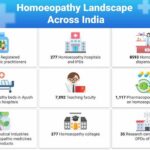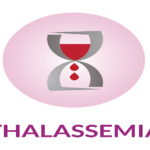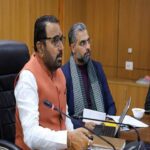- Reviews measures for Covid-19 containment and management
- Recovery rate increases to 35.09 %
India
healthysoch
New Delhi, May 17, 2020 :
Ms Preeti Sudan, Health Secretary and Shri Rajesh Bhushan, OSD, MoHFW along with senior officers of the Health Ministry, held a high level review meeting with the Pr. Health Secretaries, Municipal Commissioners, DMs and other officials from the 30 municipal areas which are contributing almost 80% of the country’s Covid-19 cases, here on May 16, 2020.
These 30 municipal areas are from the following States/UTs: Maharashtra, Tamil Nadu, Gujarat, Delhi, Madhya Pradesh, West Bengal, Rajasthan, Uttar Pradesh, Telangana, Andhra Pradesh, Punjab and Odisha.
The measures taken by the officials and the staff of the municipal corporations for the management of COVID-19 cases were reviewed. It was informed that fresh guidelines on management of COVID-19 in urban settlements are being shared. Highlights of this strategy were discussed. A presentation was made on the present status of COVID-19 infections in the districts while highlighting the high risk factors, indices such as confirmation rate, fatality rate, doubling rate, tests per million etc. They were briefed about the factors to be considered while mapping the containment and buffer zones; the activities mandated in containment zone like perimeter control, active search for cases through house to house surveillance, contact tracing, testing protocol, clinical management of the active cases; surveillance activities in the buffer zone like monitoring of SARI/ILI cases, ensuring social distancing, promoting hand hygiene etc.
It was highlighted that in general the geographic area of containment zones to be defined based on factors like mapping of cases & contacts, geographical dispersion of cases and contacts, area with well demarcated perimeter and enforceability. For Municipal Corporations, residential colony/mohallas/municipal wards or police-station area/municipal zones/towns etc., can be designated as containment zones, as appropriate. It was advised that the area should be appropriately defined by the district administration/local urban body with technical inputs from local level. Along with the containment zones, buffer zone around containment zone also must be demarcated to break the chain of transmission. Maintaining high vigilance and monitoring in areas of old cities, urban slums and other high density pockets along with the camps for migrant workers are important steps in COVID-19 management in the urban areas.
Regarding management of indicators like high doubling rate, high case fatality rate and high confirmation percentages seen in the containment zones, they were informed about the possible root causes and recommendations were offered on possible actions that could be taken. It was also highlighted that especially in the densely populated urban areas further challenges need to be considered like poor socio-economic conditions, limited health infrastructure, lack of social distancing, issues faced by women among others factors.
Health Secretary also emphasised that along with the containment and management of COVID-19 cases, the issue of continuing all essential non-COVID health services in the urban localities like RMNCHA+N care, cancer treatment, TB surveillance, immunizations efforts, vector control measures in view of the ensuing monsoon, etc., need to be ensured. The Municipal Areas were asked to focus on effective risk communication in order to build trust and confidence. They were requested to engage with community leaders and local opinion leaders who could accompany the local surveillance teams to encourage cooperation from the local communities. Mumbai shared its experience of “Containment leaders”, who were local community elders and leaders working with the Ward Officers to support the government efforts in encouraging the people particularly in the slum clusters. Role of community leadership was highlighted in finding local solutions, building trust, and for a positive influence on the health workers.
It was also emphasised that added attention needs to be accorded to timely tracing of patients to improve recovery percentage, SARI/ILI Surveillance, and more effective human resource management. It was advised that all health service providers need to be provided with adequate protective gear and communication must focus against the stigmatisation of these frontline health workers. Maintenance of sanitation standards of the relief and isolation camps, and waste management from the homes of COVID-19 cases was also stressed upon.
So far, a total of 30,150 people have been cured. In the last 24 hours, 2233 patients were found cured. This takes the total recovery rate to 35.09 %. The total number of confirmed cases is now 85,940. Since yesterday, an increase of 3970 has been noted in the number of COVID-19 confirmed cases in India.
healthysoch







